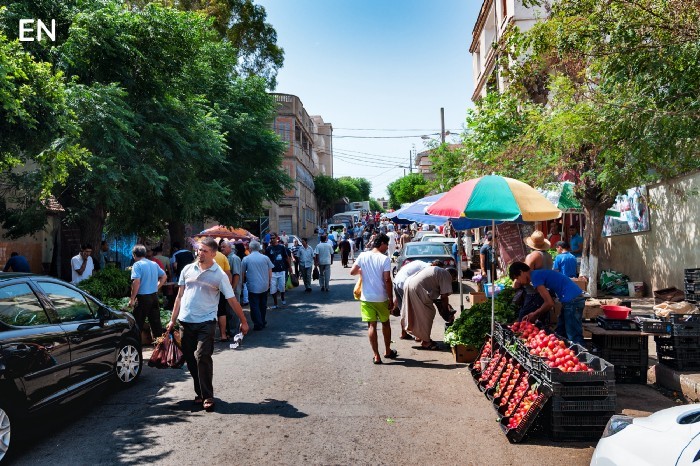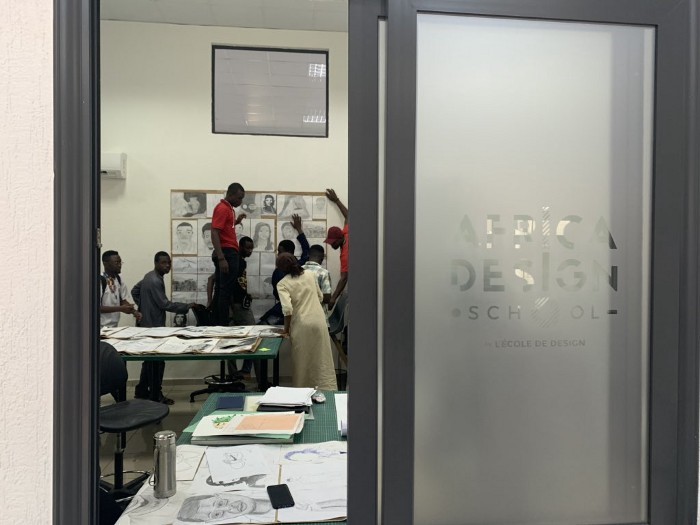WELCOME TO VILLAGE 2.0
How the Sèmè City team was inspired by the organisation of an African village to facilitate a joint experimentation process with a number of different stakeholders.

Launched in 2019, ASToN is a network of 11 African cities who want to use digital tools to meet their local challenges, which also exist on a global scale, such as waste treatment, land management, urban transport and tax management. As a result, these cities are fully involved in a digital transition process that also involves a transformation in the way their devise and carry out their local projects, in particular through the integration of more participatory approaches.
Within the network, events bringing together all local teams from the 11 cities and international experts are held on a regular basis. One such network event took place in December 2020 on the topic of joint data mining, in connection with the design of a local project. The idea was to revisit a learning area of the network:
“how can stakeholders be involved in solution design?”.
As innovation, co-design and sustainability are the very cornerstones of the network, the involvement of the Sèmè City Development Agency was a matter of course.
The mission of the Sèmè City Development Agency (Sèmè City) in Benin is to design, plan and develop an intelligent and sustainable city centred on innovation and knowledge. The three main pillars are cutting-edge training adapted to changing professions; research and experimentation into innovations with a high economic and social impact; and the creation of an entrepreneurial ecosystem to facilitate sustainable development.
Establishing this kind of ecosystem requires heavy involvement on several different time scales of numerous political, economic and social stakeholders at both national and local level, technical and financial partners, operators proposing offers to learners, researchers and business owners and the population concerned.
Without an instruction manual to deal with the challenges of orchestrating these different categories of stakeholders, Sèmè City very quickly decided to work in a collective “co” mode: collaboration, co-experimentation, co-creation, co-construction, etc.
This is why, in November 2019, we selected entities with innovative solutions in renewable energies and eco-construction, who were willing to develop them in collaboration with other stakeholders for experimentation in the commune of Sèmè-Podji. This is the question we were asked: “How do you get 50 participants who don’t know each other to work together (start-ups, SMEs, researchers, academic institutions and public stakeholders) so that in just two days they are able to design innovative projects in renewable energies and eco-construction that meet the expectations of the commune of Sèmè Podji?”
Organising an open innovation workshop seemed like the perfect set-up to bring together multidisciplinary solutions and points of view so that ultimately one or more common projects could emerge. Above all, this workshop was to be an exceptional and unique opportunity to bring together as many qualified and interested parties as possible, all around innovative ideas.
When preparing the workshop, we wanted to take inspiration from an African village, as they are organised around a way of living together. The village evokes a sense of family and the links that individuals forge with each other in the pursuit of common goals.
Just like in a village, we defined:
– The main families in the village, who are responsible for producing and generating village resources corresponding to the themes of co-experimentation: here these are the energy efficiency of a city hall, green recycling (biomass, biogas, green carbon) and even smart energy storage.
– The values, attitudes and principles that everyone should follow, defined in a charter to be applied by everyone: honesty, understanding, balance, generosity, good humour, learning, mutual aid, goodwill and collaboration.
– Specific roles for the village inhabitants: the head of the family manages the project and makes decisions, the dignitary has the power to make the project progress, the healer offers tools and solutions, the expert is consulted on technical questions, the storyteller spreads word of the project and the judge assesses the results.
During the workshop, an affinity among the members of the same family was naturally created, even if each of their needs was different. What’s more, no one was forced to stay part of a particular family. Family members who didn’t feel comfortable could change families (or could also go elsewhere, far from the village).

This analogy of a village was very well received by the various participants and each of them has been able to get involved and fulfil their role in providing the link and the binder. Within the families, the ideas of each family member was listened to, dealt with, and the most relevant choices made with the help of the heads of families and dignitaries. Even during disputes — which are inevitable within a village — the ambiance remained kind and considerate, and the participants did not hesitate to get involved, even outside of the time slots provided for the workshops. The workshops took place at a very fast pace, with deliverables being delivered at different times of the day, leading the various stakeholders to get to the very heart of the matter.
In just two days, this original approach allowed us to create a real team dynamic for the design of innovative co-experimentation projects. At the end of the workshop, the jury selected 6 projects led by 22 contributors, and these will begin to be deployed at the start of 2021 with the involvement of a number of different stakeholders.
You can find more information here (in French): https://semecity.bj/programmes/ace
There are a great many lessons that African cities can learn from the village analogy.
This analogy makes it possible to clearly integrate a varied and complete range of stakeholders — from the local political decision-maker to the beneficiaries, and including funding, communication and evaluation bodies — into the decision-making and design ecosystem. And this integration doesn’t have to be set in stone exactly as it is.
In areas of interest to ASToN cities, such as tax management, making mobility safer, improving road traffic communication with users and citizen participation, a large number of stakeholders is required. It is not only a question of involving these various stakeholders, but also of ensuring that each of them fully understands their roles and that each takes full ownership of their responsibilities in the co-design of projects. Everyone has their own voice and area of responsibility. This means that everyone is involved in setting up the project, from the point of view of a motorist, a tax manager, an economist, a local authority or a web developer, for example.
In addition to applying to issues of participation and co-creation at a local level, these lessons also apply more generally to African cities. With an urbanisation rate of more than 4% (source: https://www.cairn.info/l-economie-africaine-2020–9782348057465-page-57.htm [in French]), African cities are seeing their populations increase rapidly. For this reason, these populations require urban services to be established that are sustainable and adapted to their needs. This multidisciplinary ecosystem approach of co-design seems like an appropriate fit.
Co-written with Claude Borna from Seme City.


